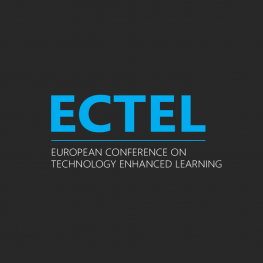Speakers
Laëtitia Pierrot
TECHNE EA 6316, University of Poitiers, FranceKairit Tammets
School of Digital Technologies, Tallinn University, EstoniaStart
14/09/2022 - 11:00
End
14/09/2022 - 12:30
Address
Room B306 View mapSession: Teaching practices and COVID-19
Chair:  Darina Dicheva
Darina Dicheva
The digitalization of teaching practices in K-12 education: insights from teachers’ perspective
Panagiotis Kosmas[1,2,4], Demos Michael[1,3], Efi Nisiforou[1,4] and Charalambos Vrasidas[1,4] [1] Center for the Advancement of Research and Development in Educational Technology (CARDET), Cyprus [2] Cyprus University of Technology, Cyprus [3] University of Cyprus, Cyprus [4] University of Nicosia, Cyprus
Abstract: The reopening of schools and the returning to normal after the emergency experience of online teaching brought to the line new realities in educational practice for both teachers and students. It is now crucial to reflect on the consequences of this experience and rethink the prospects of using digital tools and online learning. The previous remote learning experience could be conceived as an opportunity for the educational community to take advantage of the benefits online teaching offers and adopt those practices that could further develop the teaching experience. This paper examines the reality in K-12 schools after the pandemic investigating the incorporation of seven digital teaching strategies into teachers’ daily routines. The study adopts a mixed methodology approach analysing quantitative data from an online survey of 392 in-service teachers and qualitative data from two focus groups. The results show that an essential percentage of teachers continue to use some practices of the distance learning model to enhance learning and communication in the classroom. The use of these strategies was directly and indirectly affected by teachers’ attitudes towards the distance learning model and their perceptions of the challenges faced during the pandemic. Implications for policy and practice are drawn.
📄 Read More: https://link.springer.com/chapter/10.1007/978-3-031-16290-9_11
Towards Modelling the Technology Integration in Elementary School. A Diachronic Study of Teachers’ Digital Practices During and After Covid-19 Lockdown
Christine Michel and Laëtitia Pierrot University of Poitiers, France
Abstract: Different studies have highlighted changes in pedagogical practices in elementary school and several of them question the potential impact of lockdown. The objective of our research is: to analyse the TEL practices of French elementary school teachers in 2020 and 2021, to determine and qualify the levels of technological integration, and to identify the factors explaining the (non-)integration of technology. We conducted a survey and analysed the responses of 572 teachers on their practices and work contexts in 2020 and 2021. By combining a cluster analysis technique on the reported practices and a covariance analysis between the obtained classification and other variables, we identified 3 groups of practices (stabilized, emerging, underdeveloped) and 5 classes of teachers (traditional, interpretative, reproductive, explorer, innovator) according to the way they use technology in vs. outside of the classroom and for traditional vs. constructive learning methods. The impact factors are personal (like the perception of the added value of TEL), contextual (like the equipment offered at the school) and related to the experience of remote work in 2020 (like the feeling of isolation). In the light of our results, we propose recommendations: to foster greater digital integration that goes hand in hand with teachers’ professional development and to conduct future diachronic analysis of practices.
📄 Read More: https://link.springer.com/chapter/10.1007/978-3-031-16290-9_15
Integrating Digital Learning Resources in Classroom Teaching: Effects on Teaching Practices and Student Perceptions
Kairit Tammets[1], Edna Milena Sarmiento-Márquez[1], Manisha Khulbe[1], Mart Laanpere[1] and Tobias Ley [2] [1] Tallinn University, Estonia [2] Danube University Krems, Austria
Abstract: During recent decades, technologies have been widely available for educational institutions, being just one step in the long process of adoption and integration. Despite the number of studies focusing on the adoption of technologies in education, they often focus on teachers’ perspectives, leaving out students’ perceptions. Given that student learning is the cornerstone of technology-enhanced learning, this oversight is a serious drawback in promoting fruitful integration of technology in education. In this paper, we have tracked the use of over 6000 digital learning resources in the authentic setting of secondary schools in Estonia. Using qualitative analysis of open answers by teachers about their teaching practices and a structural equation modelling of school students’ reactions to these teaching practices, we uncovered several influencing factors of students’ perceived usefulness and experiences of using Digital Learning Resources (DLRs). Results show that similar to teachers, the use of DLRs presents students with new challenges that they need to adapt to in their learning.
📄 Read More: https://link.springer.com/chapter/10.1007/978-3-031-16290-9_28


